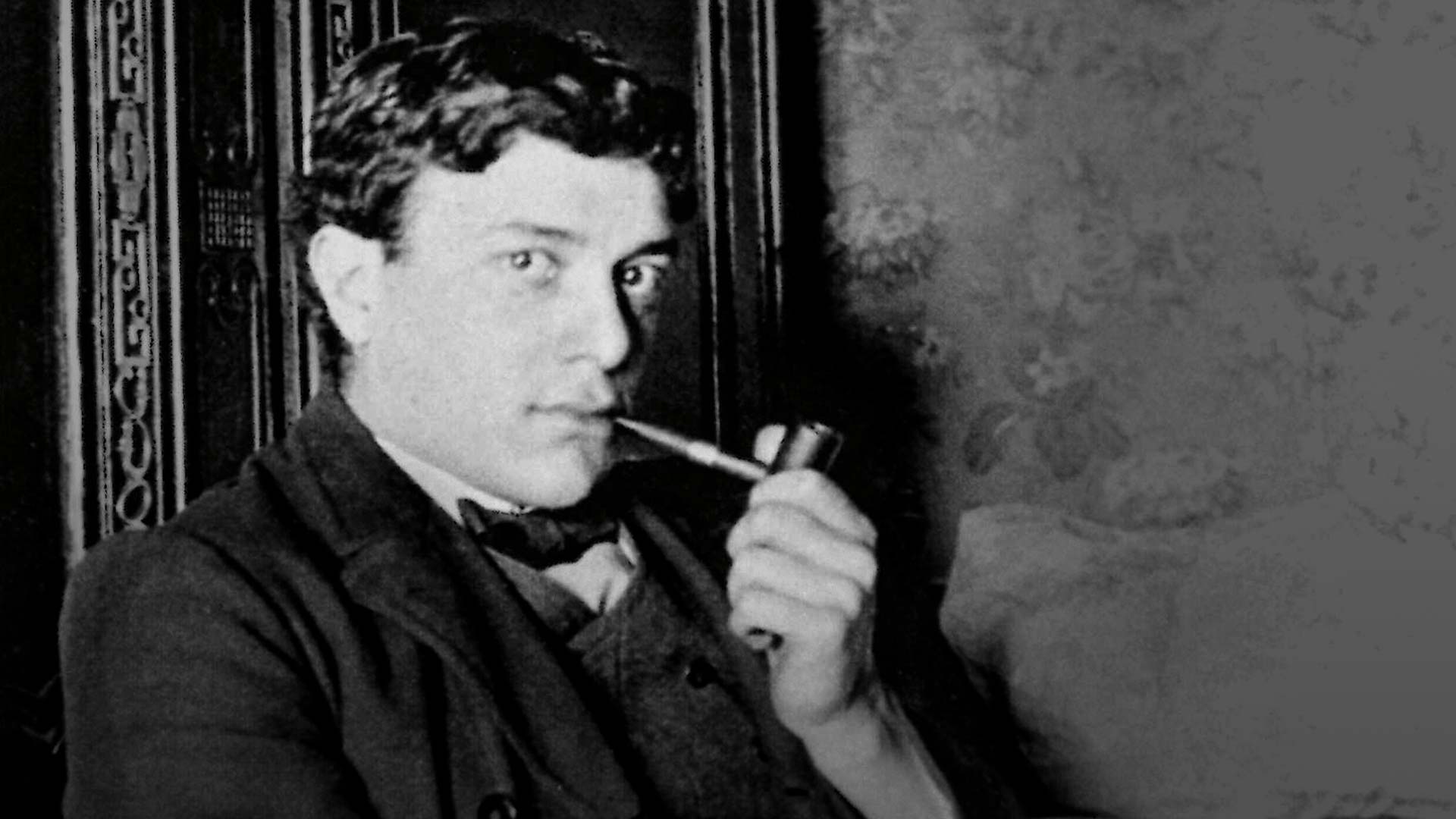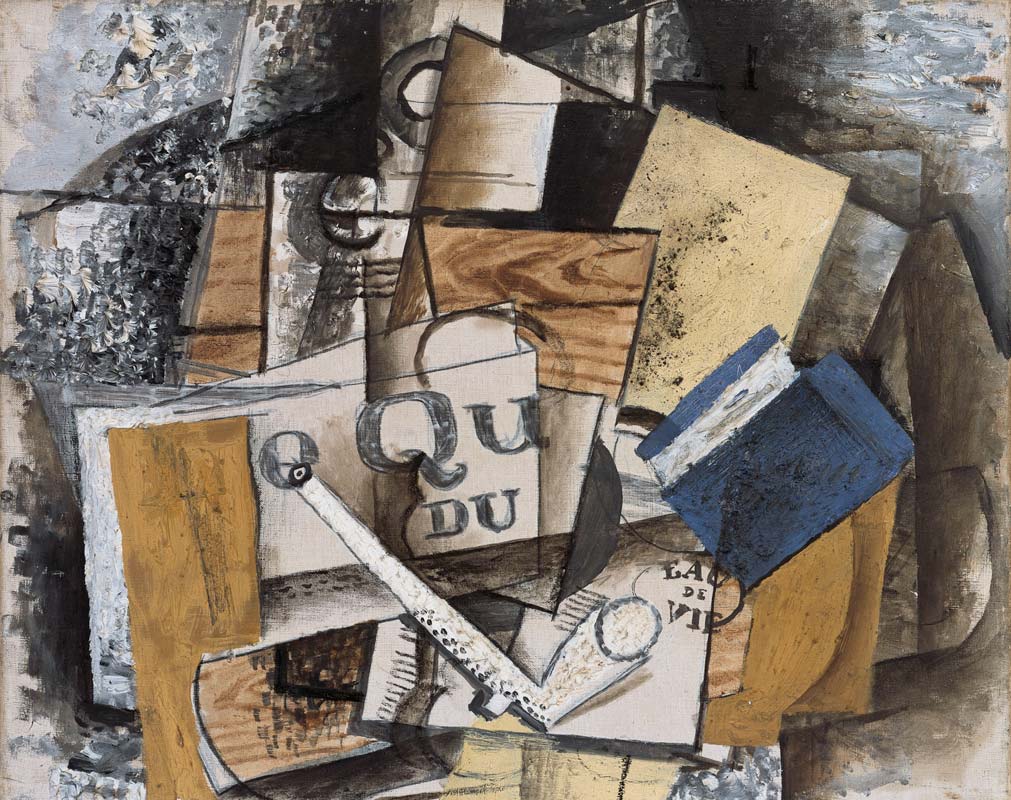

Braque
September 25, 2021 — January 23, 2022


September 25, 2021 — January 23, 2022
Georges Braque with pipe, c. 1905/06
He is considered a quiet, thoughtful painter in the turbulent artists’ quarter of Montmarte in Paris at the beginning of the twentieth century. In fact, he was a pioneering artist of the French avant-garde.
In the years before the First World War, the young Georges Braque (1882–1963), together with his friend Pablo Picasso, spent eight years shaping what was perhaps the most revolutionary stage in the history of modern painting: Cubism, which signified a new way of representing the world.
The exhibition at the Kunstsammlung features Braque’s particularly exciting and eventful early work, which he developed between 1906 and 1914. Visitors can discover how the young painter further developed or reinvented stylistic means in rapid succession and at the highest level.
Fauvism, Proto-Cubism, Analytical Cubism, “papiers collés,” and Synthetic Cubism follow one another in unique condensation. The exhibition demonstrates this with roughly sixty masterpieces from international museums, private collections, and the holdings of the Kunstsammlung Nordrhein-Westfalen.
Georges Braque, Paysage a L’Estaque, octobre 1906
Viewing the works of Henri Matisse, André Derain, and others at the 1905 Salon d’Automne in Paris was a key experience for the twenty-three-year-old Braque. The pure, luminous colors in their paintings no longer had anything to do with the appearance of the colors of things in light and the illusionistic perspectives that the paintings of the Impressionist painters depicted. Here, the new findings of research on the physical properties and perception of colors came into play. The painters, who critics called “fauves” (wild beasts), encouraged the young Braque to experiment with their stylistic devices as early as the summer of 1906. By the fall of 1907, Braque had painted approximately seventy Fauvist paintings that celebrated the expressive power of color and transformed the pictorial spaces of the many landscape depictions into colorful surface compositions.
Georges Braque, Paysage de La Ciotat, 1907
Susanne Meyer-Büser
curator of the exhibition, discusses the work
“Fauvist painting impressed me because of the newness it offered, and that suited me […]. It was a decidedly enthusiastic painting that suited my age: I was twenty-three [...]. Since I was not fond of Romanticism, I liked this physical painting.”
Georges Braque about Fauvism
Excerpt from: Wilbur Wright and His Flying Machine, c. 1909,
At the Parisian Salon d'Automne in the summer of 1907, Braque visited the major retrospective of the painter Paul Cézanne (1839– 1906), who had died the year before. He was impressed by Cézanne’s paintings with their approximation of natural forms to geometric shapes and their arrangement in flat, relief-like pictorial spaces.
Under the impression of these works, Braque undertook his next trip to Southern France in the fall of 1907. In the fishing village of L'Estaque, the elements of his landscape paintings increasingly took on basic geometric forms. From these, he built his pictorial structures, which are not subordinate to any perspective construction. Increasingly, brown, gray, and green tones determined his paintings, constructed flat pictorial spaces, and integrated the elements into the overall composition. More and more frequently, Braque completed his paintings in the studio as constructions of memory rather than as depictions of the visual experience in front of nature.
“According to my recollection it was Braque who made the first Cubist painting. He brought back from the south a Mediterranean landscape that represented a seaside village seen from above. […] This is really the first picture constituting the origin of Cubism, and we considered it as something quite new, about which there were many discussions.”
Henri Matisse on the origin of Cubism
“I bid farewell to the vanishing point. And, to avoid a projection towards infinity, I interpose closely spaced overlapping planes, so that it is understood that one thing is in front of another instead of distributed in space. [...] Rather than starting with the foreground, I would concentrate on the center of the picture.”
Georges Braque on Proto-Cubism
Excerpt from: The Universal International Exhibition, Paris, 1900,
The friendship between Georges Braque and Pablo Picasso (1881–1973) was of great importance for the further development of painting. Between 1908 and 1914, they were close friends and further developed the principles of their painting in daily exchanges. The geometrization of forms had already led to a fragmentation of the pictorial space and the forms of objects.
In the further course of development, they abandoned the ideas of a fixed viewer’s vantage point, a uniform space and light source, and the colors of objects; ocher, brown, gray, and white tones determined their paintings, which were now composed of various views. With the idea of the painters’ movement around the things and the searching movement of the viewers’ eyes in front of the works, the artists of Analytical Cubism seem to correspond to the idea of a world in motion.
The years leading up to the First World War in Western Europe brought groundbreaking inventions, new ways of thinking and philosophies, and the fascinating acceleration of everyday life. Around 1900, Paris was seen as the epitome of the modern city, of technical progress, and of cultural life. The belief in a creative force and basic dynamic in all life processes—as described by the French philosopher Henri Bergson in 1907 with his term “élan vital”—seems visible here in all areas. An international group of artists and other intellectuals found diverse inspirations and situations here in mutual exchange, which changed their spatial and temporal modes of perception. Automobiles, the metro, airplanes, the Eiffel Tower, elevators, and X-ray images thus opened up new visual experiences, perspectives, and experiences of space and time. The increasingly popular cinema, with its moving images and pictorial magic, also expanded the horizon of perception and became a source of inspiration for the painting avant-garde.

Le Portugais (L’Émigrant), 1911/12
Susanne Meyer-Büser
curator of the exhibition, discusses the work
A critic on Cubism / Louis Vauxcelles, Gil Blas, November 14, 1908
Excerpt from: Elevator Ascending the Eiffel Tower, Paris 1900
The exhibition presents a small group of precious drawings and etchings from Braque’s phase of Analytic Cubism. In the restriction to graphic means, the increasing abstraction from observable reality, the fragmentation of the pictorial signs, and their rhythmic arrangement into a planar composition that follows an inner pictorial logic alone became even more apparent. With their abstract qualities, these works on paper are reminiscent of musical notations or music, which is often perceived as the most abstract of the arts.
These works radicalize questions about the relationship between representation and surface and deal with assumptions about the geometric foundations of the world and the image carrier.
These are questions that also played a role in the discussion about the “fourth dimension.” The theory of relativity, which Albert Einstein formulated in 1905, required a new way of thinking about space-time constellations, as well as possibilities of perception and representation in a world in which things and ideas are always in motion and thus cannot be separated from a temporal dimension.
Eug̬ne Atget, Paris Kiosk, Paris, 1910s;
In 1912, Georges Braque invented the “papiers collés.” In a paint store, he discovered and purchased an imitation wood-grain wallpaper. The material fascinated the trained decorative painter and respected artist, who thought about questions revolving around the depiction of reality. Using pieces of wallpaper, newspaper clippings, sheet music, and program leaflets, he added real, mass-produced materials to his works.
When he pasted and layered his paper forms into complex compositions and supplemented them with drawn forms, he opened dialogues between cut and drawn forms, between printed and drawn pictorial elements. He thus once again expanded the Cubist vocabulary of forms and played with levels of reality. Newspapers and program leaflets from the cinemas contained references to the everyday life of the time, as well as to the experience of the moving images of the film projections. Cinema and the dynamics of seeing wereare thus also explicitly thematized.
Thomas A. Edison: Scene from the elevator ascending Eiffel Tower, Edison Manufacturing Co., 1900
With their image combinations and art-theoretical surprises, the “papiers collés” paved the way for the development of Synthetic Cubism.
Beginning in 1913, Georges Braque worked on paintings that transferred the principle of layering levels of image and reality into paintings, using all the richness of his previous experience and the possibilities of painting. Painted wooden structures prove the ability of painting to deceive the eye. Drawn elements and pasted materials enrich the play with possibilities of depiction. Thick layers of paint with sand mixed in vary and celebrate the surface quality of the painting. The actual relief of the painting layer contributes to the play with surface emphasis and spatial effects in the juxtaposition of transparent and opaque colored surfaces. From this, representational motifs emerge as contoured forms.
The paintings of Synthetic Cubism thus unfold qualities that are both sensual and intellectual.

Nature morte à la pipe (Le Quotidien du Midi), 1914
Susanne Meyer-Büser
curator of the exhibition, discusses the work
Mobilization in front of the Gare de l’Est, August 3, 1914,
On August 2, 1914, Braque received his draft notice in Avignon. His military service marked the temporary end of the rapid development of the painter’s oeuvre.
Braque was seriously wounded during a front-line mission in 1915. He had to recover from his head injury and went to Sorgues to do so. In 1917, he returned to Paris and began to paint again. He succeeded in reconnecting with his work after the caesura of the war.